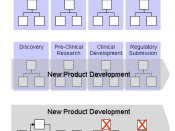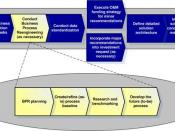In this highly automated, IT-led business environment, companies are forced to keep up-to-date with the new technologies to remain competitive (Siriginidi, 2000a). ERP systems provide distinct advantages to companies adopting them as they can integrate business applications using real-time information. Therefore, ERP systems provide the means for management to respond to the increasing business needs in more effective and efficient ways. The main benefits of ERP systems are seen as the production of real-time data shared across the organization and consequently the integration and automation of business processes. This is particularly important in this new business environment where automation, effectiveness and efficiency in operations and real-time data are important factors for business success. The provision of timely information improves the decision-making process, planning and control of ERP adopters. Consequently, higher effectiveness and efficiency in operations and improved customer satisfaction are the ultimate benefits derived from ERP systems (Gupta, 2000).
ERP systems evolved from advanced manufacturing technologies (AMT) both of which were developed as a response to the increasingly competitive environment.
In particular, their purpose has been to increase quality, lower inventory levels and enhance customer service mainly via improved manufacturing flexibility (Siriginidi, 2000b). Others report the year 2000 problem, currency consolidation (Euro), integration of all business functions and processes and Internet interface as additional motives for ERP applications (Gupta, 2000). Within an ERP environment, transactions are treated as part of the inter-linked business processes (Gupta, 2000). In essence, business processes are integrated and automated whilst, data is shared across departments and particularly, real-time information. Therefore, one may expect that a "complete" ERP system would incorporate "modules" relating not only to the traditional accounting information system but also, stock control, MRP, and logistics. EDI systems and e-commerce might also be additional dimensions of an ERP system. Nicolaou (2002) reports...


